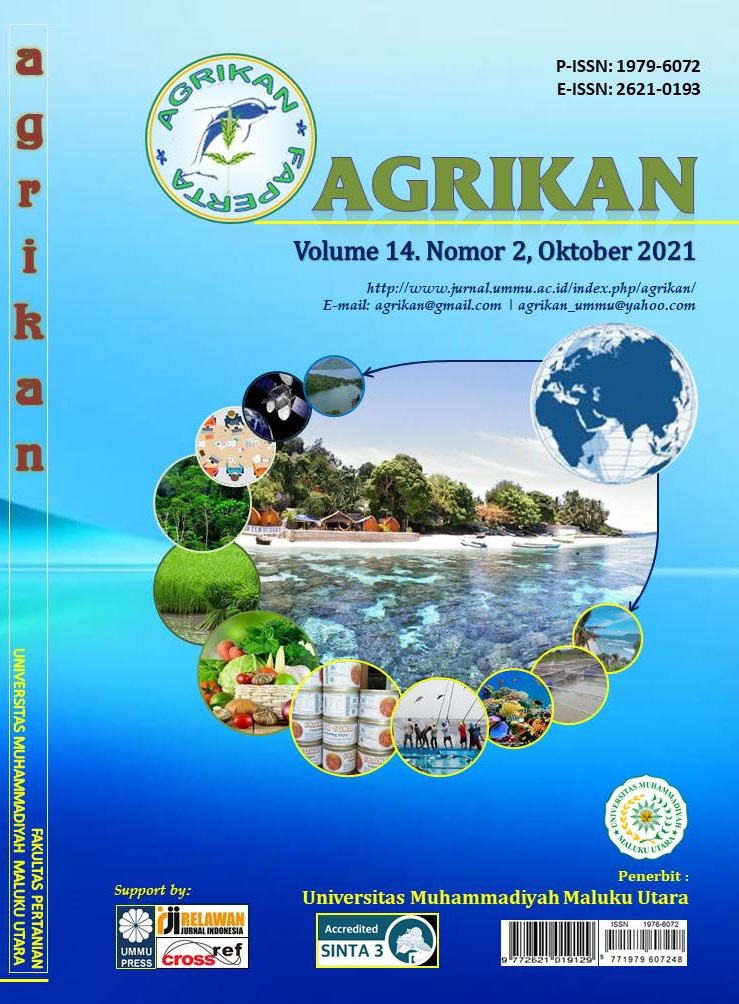A Model of Waste Management in Kapoposang Island South Sulawesi
DOI:
https://doi.org/10.52046/agrikan.v14i2.819Keywords:
Waste, Household, EnvironmentAbstract
Garbage is not only a problem for people in urban areas but also in islands. The lack of awareness and knowledge and the availability of final waste disposal facilities on the island are the reasons for the accumulation of garbage and waste polluting the waters. This study aims to produce a household waste management model that will support the sustainability of marine resources on the coast by knowing the type and amount of waste and waste produced by island communities and analyzing family behavior in its management and village government support in supporting the sustainability of coastal environmental resources. This research is qualitative research with descriptive correlation analysis. The sample was randomly selected as many as 50 families on Kapoposang Island, representing 4 RT areas. The results showed that 82 women contributed to producing household waste, and men (18%) made waste from fishing activities. The type of waste on the island is 65% organic waste and 35% inorganic, where it is known that 15-20% is plastic. The average waste generated is 0.2 kg/liter per person/day, with a total waste of all household respondents of 10 kg/day. The island produces around 1170 Kg/day of household waste/day. The government's role in facilitating waste management training is still low (12%). The existence of the PKK program and youth groups that love the environment will support the development of waste management.
Downloads
Published
Issue
Section
License
Copyright (c) 2021 Mardiana E Fachry, Alpiani Alpiani

This work is licensed under a Creative Commons Attribution 4.0 International License.

This work is licensed under a Creative Commons Attribution 4.0 International License.













